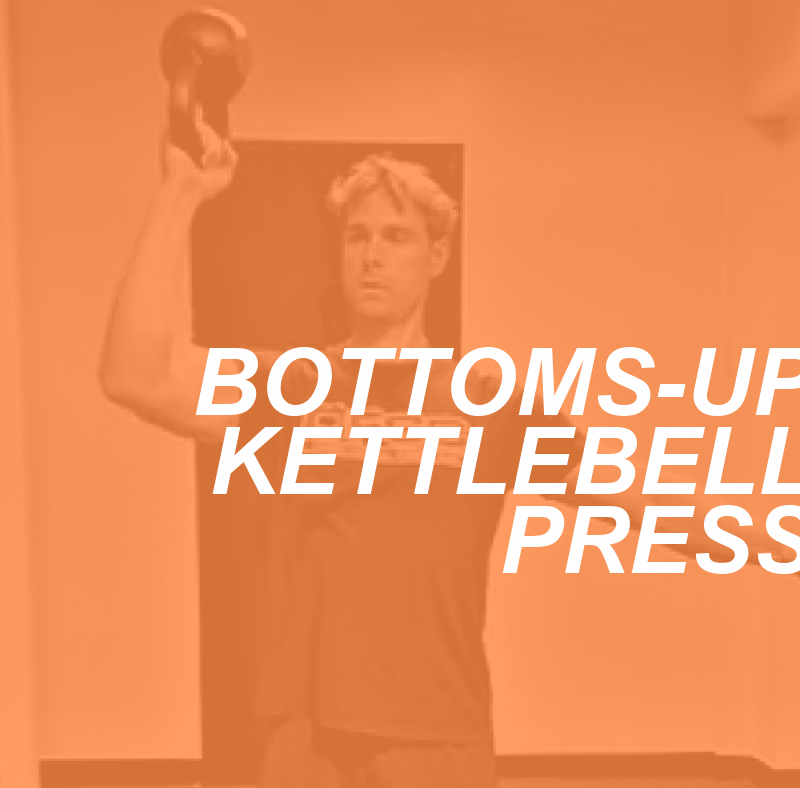
Pressing overhead properly requires adequate shoulder mobility along with proper core bracing to avoid arching in the lower back. Unfortunately for a lot of people, there is often some type of compensation when lifting the weight up causing injury or simply lackluster results. Over the years, I’ve determined there’s a better, safer alternative to the overhead press: the bottoms-up kettlebell shoulder press.
Think of the shoulder as a spiral, diagonal rotational joint. Meaning, the shoulder functions better when it can move in rotation compared to in a fixed, straight path like a barbell is going to force it to do. Regardless of who you are training, you will have less cranky shoulders if you permit them to move in a fashion more amenable to the joint.
What is the Bottoms Up Kettlebell Shoulder Press?
It’s exactly what it sounds like. The heavy part of the kettlebell is held upside down and you hold the handle below the weight. Now, because of the weight being balanced above your hand there is a tremendous amount of instability you’ll have to control just holding the weight. You will find this exercise become humbling just trying to control the weight, calling for a lighter weight than you would normally press with.
Top 3 Benefits of the Bottoms Up Kettlebell Shoulder Press
- Due to the instability, there is a greater stimulus to actively control the load from flopping over to side; you recruit more muscle fibers and motor units
- Gripping recruits the rotator cuff and fires up all the shoulders small stabilizing muscles while also improving grip strength
- Promotes better form and execution leading to better results in fewer injuries. If you rush the exercise, the kettlebell will flop over so it forces you to control the weight throughout the entire range of motion.
How to Perform the Bottoms Up Kettlebell Shoulder Press
- Grab the kettlebell by the handle with the round part of the weight pointing upward, or in an inverted position (upside down).
- Hold the handle with a strong grip to prevent the kettlebell from falling to the side. (You may opt to practice holding it still if the wrist feels weak until you gain control over the KB in this position)
- Under control, press the kettlebell up until your arm is fully extended towards the sky.
- Slowly lower the kettlebell back down to the starting position.
Go For It
The bottoms-up shoulder press is a great introduction to overhead pressing as it encourages optimal form and proper bracing. I like this exercise for all types of clients especially those over 40 years old since function and mobility start to decline around this age without proper training.







